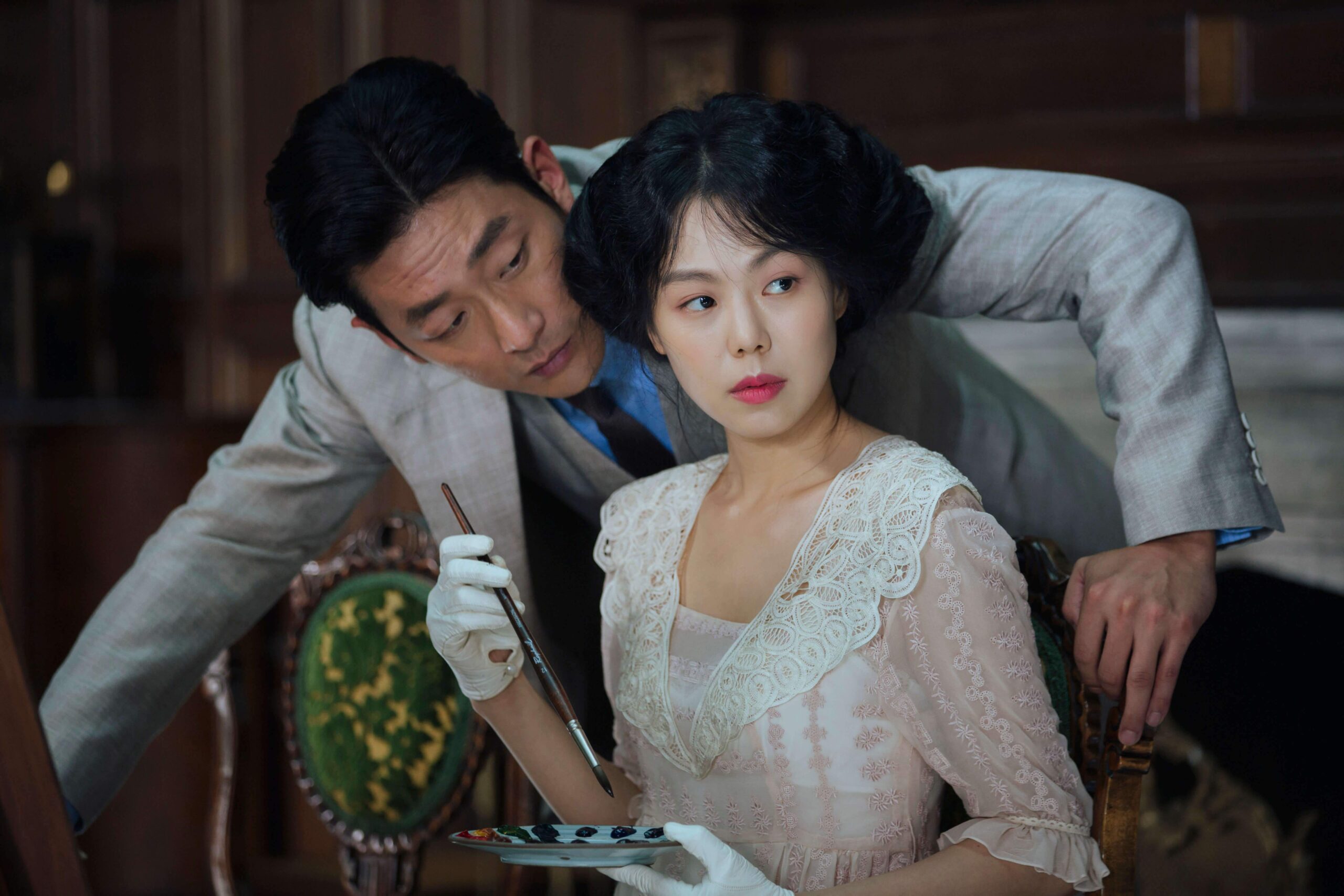Very few people write characters with no moral bearings better than Park Chan-Wook. His characters are flawlessly devoid of scruples. Everyone is fallible and no one is morally upright, down to even the fringe characters that populate his screens for no longer than five seconds. It’s relentlessly so and you are made to root for them regardless of their lowly intentions. It’s an ingenious exploitation of the traditional character arc – they haven’t changed much when the curtains close, but you feel that the events transpired have left a sapling of hope for them that may sprout. He keeps the moments of compassion so terse and concentrated that you’d find yourself asking – does he feel compassion for the characters whose debauchery is almost comical? Be it Oldboy or Handmaiden, spotless immorality is an overarching thesis that forms the substrate of all his films.
But then, there comes another question – how do I then engage an audience that might disconnect with my exposition if I falter in the slightest? Compositional brilliance is a strong rejoinder. It recalls to my mind the written response that Oscar Wilde had recorded in St. James Gazette after the hard landing of The Picture of Dorian Gray amidst public circles – “The sphere of aesthetics and the sphere of ethics are absolutely distinct and separate”. Though he went on to defeat his own response with another on the inherent moral lessons of his novel, the former statement is interesting. More than half a century after, Lolita debuted to the world and there was this man who had constructed a novel that placed you right in between both those spheres which were expanding and contracting on either side. Surely anyone who has read Lolita wouldn’t condone HH, but Nabokov’s mastery of his adopted language walks you to the end where the full might of a despicable man’s remorse rains down on you when he looks down at Telluride and the children playing there. The subject is extremely tacky, but to understand, not sympathize with, a perverse mind meant walking through all its recesses.
Park Chan-Wook, to some similar degree, does that with his directorial command of the cinematic language. He places you in a deeply stomach-churning situation but continues to dangle some sliver of dampness in these seemingly stone-cold people. There’s a fine scene during the first chapter of Handmaiden where Sook-Hee dramatically embraces a despondent Lady Hideko to reassure her that her mother would have been grateful to give birth to her. You then realize that this is a woman who’s only job in that place is to con and manipulate this heiress to marry a swindler who will then shut her up in an asylum, leaving all her jewellery for Sook-Hee’s admiration. It’s almost as if Park wrangles the dastardly to just the right extent to make it half-comical and half-hopeful. To make them seem so, his compositional choices are always on the mark. He intercuts right away to a dead-silent room where Sook-Hee is tending to her mistress’s hair, gently probing about her mother’s final moments. It’s very brief, but it’s that sliver of hope for reprobates that urge you to stay longer to hear their story. To find that balancing act consistently is a stroke of brilliance – like a knife twirled around a strand of hair that doesn’t hold it too taut lest it snaps nor let it slack to risk letting the knife slip.
Talking about knives, tension and cutting tension form an integral part of Park’s films. His characters don’t intend to be funny – his shot composition makes them so. As soon as the film opens, we see an army parade marching and a group of children chasing their tails. Shooed away, they run towards Sook-Hee and she curses at them for knocking her over. She turns and sees her thieving family give her a send-off. At this point, we don’t know them yet, but Park still uses a Steadicam. It’s supposed to be a very sincere moment, but given their nature, that Steadicam makes it seem comical, almost asking – are these people capable of emotion? He then switches back to a mounted shot that serves as a gateway back into a highly fictionalized world of mongrels against mongrels. The contrast itself serves as a departure from this fictionalized normal and that suffices for that twinge of humour that’s necessary to avoid making these characters seem too stilted. He does it again when he introduces Miss Sasaki, Kouzuki’s maid and mistress. When you place this side-by-side with other sequences, like the one where Hideko reads and performs a sexual act before ogling men, you realize that this Steadicam switch is Park’s cinematic giggle. He conjures them to be bedtime story monsters but falls just short to make them seem like the extents of human debauchery. Moreover, the structure, though borrowed from the original Fingersmith novel, is perfectly in-step with Park’s dramaticism. The chapters themselves move through the usual valley of drama with their own beginning and conclusion. In highly stylized films, breaking down periods of tension helps with storyboarding. Well-wrought storyboarding then helps carefully design and execute set-pieces and sequences within that period. It clearly shows here – be it in Hideko’s part where she is suspended in the air with the mannequin or in the conclusive part where Sook-Hee breaks out of the asylum.
I’ve always found it interesting that there are deep parallels, yet subtle differentiators between Park and his partner-in-crime Bong Joon-Ho. They’ve both excelled on the international stage for Korea, though the latter still holds Park accountable for swiping his Medium Cool DVD. They are both highly stylized directors. They deal with characters that are morally suspect. They are parsimonious and lean in writing – there’s hardly any slack in their films. But what differentiates them?
Since I’ve methodically gone through Park’s film sense, let me focus on Bong to bring out the contrast. There are two ways to look at this – his writing and his direction. If Park’s characters are incorrigibly cunning, Bong’s characters are much more morally ambiguous. Sure, in Parasite on the surface there might be a clear demarcation between the Kims and the Parks. But he peels off layers as the film progress to stop looking at characters as morally rigid. They shift in and out of a grey zone, and we are forced to constantly appraise their decisions in increasingly impossible situations. Park, on the other hand, has all but a few moments to poke into his characters to see if they respond compassionately. Yet, both also find their characters’ revelry funny, though they choose to follow different paths to accentuate it. From the director’s seat, Bong extracts humour from his characters through blocking more than camera choice. Take Memories of a Murder. There’s a scene where the detectives are sitting for dinner and the shop owner’s brother comes tumbling out right in between the two of them. Though both provide different degrees of comedic relief, Bong’s purpose is more to humanize his characters who go through incrementally intolerable situations. Park’s purpose is to avoid making them caricatures.
Though I shan’t be returning to Korea and its films for a while, Handmaiden was such a relief and joy to watch. It has such carefully thought-out compositional choices, lean and concentrated writing, and importantly, knows exactly when to not take itself seriously. Since Oldboy, I’d expect nothing less from Park, but this is certainly on the brighter side of his oeuvre. An oeuvre dedicated to knaves and border-line caricatures who serve to remind us that even rocks can be momentarily damp.



